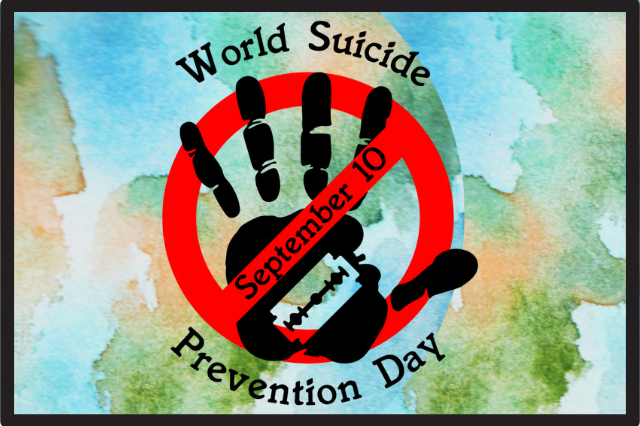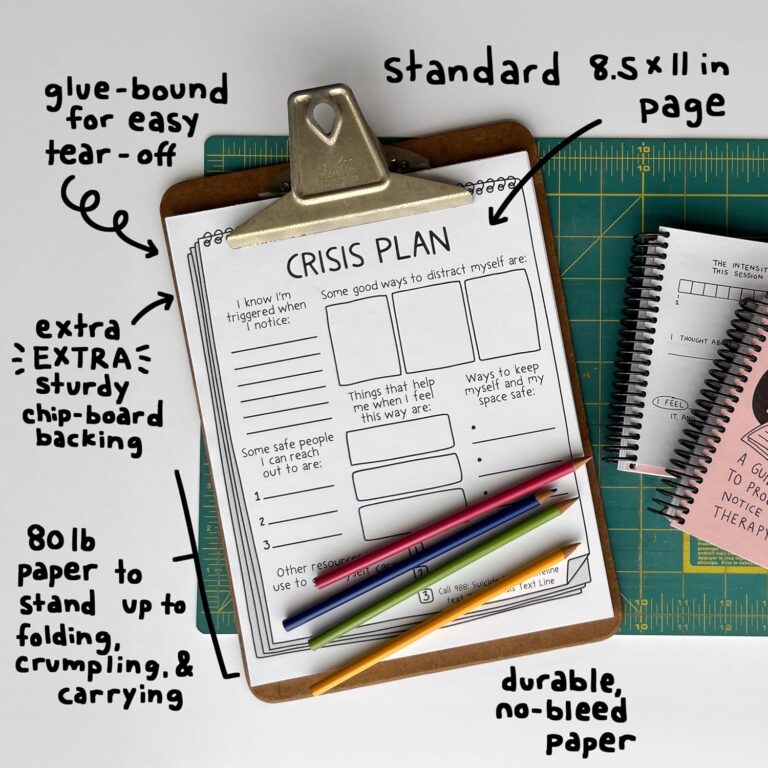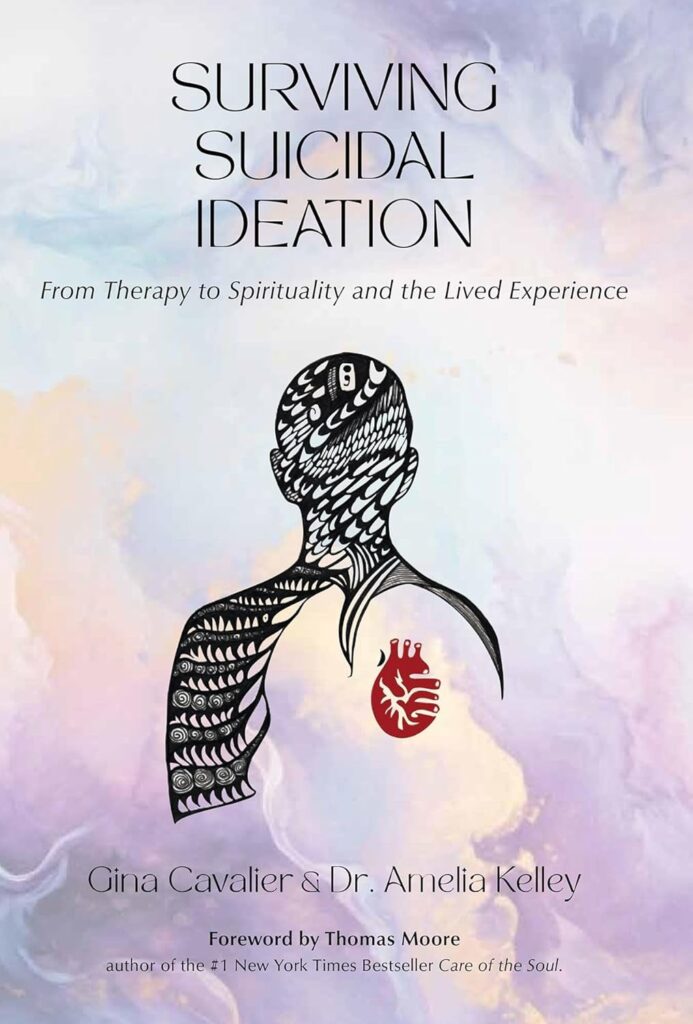In Observance of Suicide Prevention Day 🚫
Most of us have, in some way, been touched by the devastating tragedy of suicide.
Whether supporting a grieving friend, comforting a family member, or helping a colleague navigate their own dark moments, its impact reverberates through our communities, reminding us of the profound importance of mental well-being.
We talk a lot about mental health struggles… The anxiety, the depression, the overwhelming sense of despair that can feel all-consuming.
We list risk factors and warning signs, and rightly so.
But there’s a side of the conversation that rarely gets the spotlight it deserves: what makes us resilient.
What are the forces that allow one person to navigate a devastating loss, a financial crisis, or a deep depression and still find a reason to keep going?
The answer lies in protective factors… The skills, strengths, and resources that act as a buffer against suicide risk.
This isn’t about avoiding pain; it’s about building the capacity to withstand it.
As we approach World Suicide Prevention Day on September 10, 2025, the goal is to move beyond awareness and into action.
This article is a practical guide to building the protective factors that can fortify you and your loved ones.
We’ll focus on three core pillars
Your internal strengths, your community support, and your access to professional care.
Think of it as building a shield. Life will throw challenges at you; that’s a guarantee.
But the strength of your shield? That’s something you can actively work on every single day.
Your mental health action plan, made simple. Fill-in-the-blank crisis worksheets and emergency notepad are available now on Amazon.
What Are Protective Factors?
The Foundation of Resilience
Imagine a scale.
On one side, you have life’s challenges: stress, trauma, mental health conditions, and other risk factors.
These can feel incredibly heavy.
On the other side, you place weights; these are your protective factors.
The goal isn’t to remove all the weight from the first side (that’s often impossible), but to add enough to the second side to keep the scale balanced, or even tipped toward hope.
Protective factors are the positive counterweights that can reduce the likelihood of suicide.
They are the reasons to stay, the tools to cope, and the hands that pull us back from the edge.
They fall into three main categories:
- Internal Strengths: The skills and beliefs you hold within yourself (e.g., problem-solving abilities, emotional regulation, self-worth).
- External Supports: The network of people and communities around you (e.g., strong family bonds, friendships, cultural connectedness).
- Professional & Clinical Care: The access to effective medical and psychological support (e.g., therapy, medication, crisis resources).
Building resilience is about proactively adding weights to your scale. Let’s break down how you can start doing that, right now, with the following 3 pillars.
Pillar 1:
Fortifying Your Inner Foundation
This pillar is all about the relationship you have with yourself. It’s the internal dialogue that gets you through a tough moment and the skills you use to navigate a problem.
Develop Your Problem-Solving Toolkit
When you’re in crisis, it’s easy to feel like there are no solutions.
The goal is to break that feeling of paralysis.
Strong problem-solving skills allow you to see a path forward, even if it’s just one small step.
Actionable Steps to Practice:
Use the “Stop, Think, Act” Model:
- STOP: The moment you feel overwhelmed, consciously pause. Take a deep breath. Acknowledge, “I am feeling stuck right now.”
- THINK: Brainstorm all possible solutions, without judgment. Write them down. Even ideas that seem silly count—the goal is to break the mental logjam and remember that options exist.
- ACT: Choose one solution to try first. It doesn’t have to be the perfect one; it just has to be an action. Action, however small, counteracts helplessness.
- Reframe “Failure”: If your first attempt doesn’t work, don’t discard it as a failure. Treat it as data. Ask yourself, “What did this teach me? What would I do differently next time?” This turns a setback into a learning experience, building confidence for future challenges.
Discover Your Sense of Purpose
A sense of purpose is your anchor. It’s the deeply held belief that your life has value and meaning, even on the days you can’t feel it.
Actionable Steps to Practice:
Identify Your Character Strengths: You can’t leverage strengths you don’t know you have. Take the free, research-backed VIA Character Strengths Survey. Is your top strength kindness? Curiosity? Perseverance? Knowing this gives you a concrete tool to use. If kindness is a strength, using it will make you feel authentic and fulfilled.
Practice Contributory Gratitude: Move beyond just feeling thankful. Act on it. Do one small thing each day to contribute to something outside yourself. This isn’t about grand gestures. It’s about:
- Sending a text to tell a friend why you appreciate them.
- Volunteering for a cause you care about for just an hour a month.
- Helping a neighbor with their groceries.
These acts reinforce your sense of value and connection to the world around you.
Pillar 2:
Building Your Village
No one is meant to build their shield alone. Our connections to others are one of the most powerful protective factors we have. This is about both nurturing your own support system and learning how to be a support for others.
How to Build Your Support Network
Waiting for support to magically appear often leads to isolation. Be the architect of your own village.
Actionable Steps to Practice:
Schedule Connection: We schedule everything else that’s important. Why not connect? Literally put “Call Sis” or “Visit Dad” in your calendar as a non-negotiable appointment. Consistency builds trust and depth in relationships.
Find Your Tribe: Shared interests are the easiest gateway to connection. Seek out communities, both online and offline, that align with your hobbies or values. Join a:
- Local hiking group or running club.
- Book club at your library.
- Online forum for gardeners, writers, or gamers.
- Volunteer organization for a cause you’re passionate about.
These spaces provide natural, low-pressure opportunities to build relationships.
How to Be a Protective Factor for Others
You have the power to be a weight on someone else’s scale. Your actions can literally save a life.
Actionable Steps to Practice:
Listen Without Fixing:
When someone shares their pain, our first instinct is often to offer advice or a solution.
Often, what people need most is to feel heard and validated. Try simply saying,
“That sounds incredibly difficult. I’m so sorry you’re going through that. Thank you for telling me.”
Ask the Question Directly:
If you are worried someone may be suicidal, it is okay and encouraged to ask directly. “Are you thinking about suicide?”
This question does not plant the idea. Instead, it reduces isolation, shows profound care, and opens the door for them to be honest.
Be prepared to listen calmly to their answer and help them connect to resources.
Pillar 3:
Prioritizing Access to Clinical Care
Clinical care is a vital component of the shield. It’s the specialized reinforcement we need when our internal resources and community support aren’t enough.
Seeking help is a sign of strength and self-awareness, not weakness.
Taking the First Step to Get Help
The mental healthcare system can feel confusing and intimidating.
Breaking it down into simple steps can make it less daunting.
Actionable Steps to Practice:
Start with Your Primary Care Physician (PCP): Your regular doctor is a fantastic and often overlooked first point of contact. They can:
- Rule out any underlying physical health conditions that might be contributing to low mood (e.g., thyroid issues, vitamin deficiencies).
- Provide initial screenings for depression and anxiety.
- Offer referrals to trusted therapists and psychiatrists in your insurance network.
Leverage Telehealth Platforms: Services like BetterHelp, Talkspace, and Alma have dramatically lowered the barrier to access. They allow you to:
- Connect with a licensed therapist from your home.
- Often find more flexible appointment times.
- Use text-based therapy as a starting point if talking feels too intense.
Create a Personal Mental Health Safety Plan
A safety plan is a pre-written, step-by-step list of what to do if you start to feel overwhelmed by suicidal thoughts.
It’s created now, while you’re feeling clear-headed, so it’s there for you in a moment of crisis.
Your plan should include:
- Warning Signs: How will I know when I’m starting to feel unsafe? (e.g., “isolating myself, not sleeping, thinking ‘everyone would be better off without me'”).
- Internal Coping Strategies: What can I do on my own to calm myself? (e.g., “go for a run, listen to my calming playlist, practice the 5-4-3-2-1 grounding technique”).
- People to Contact: Who can I reach out to for distraction and support? (List 2-3 friends/family members and their numbers).
- Professionals to Contact: Who are my professional supports? (List therapist, psychiatrist, and doctor names and numbers).
- Crisis Resources: What number do I call if I need immediate help? (See resources below).
- Making My Environment Safe: How can I make my immediate environment safer? (e.g., “ask my partner to hold my medication, remove or secure firearms”).
You can find a trusted, fillable safety plan template from the Stanley-Brown organization here.
Weaving It All Together:
A Lifelong Practice
Building resilience isn’t a one-time project you complete.
It’s a lifelong practice, like building physical fitness.
Some days will be easier than others.
The key is to consistently tend to all three pillars of your shield.
Your Quick-Reference Checklist:
- Practiced the “Stop, Think, Act” model with a minor problem today.
- Identified my top character strength via the VIA Survey.
- Scheduled one connection with a friend or family member for this week.
- Researched one new community (online or offline) to join based on my interests.
- Saved the 988 number in my phone.
- Started drafting my Safety Plan.
This World Suicide Prevention Day, don’t just be aware; be active.
Choose one item from this list and take that first, small step. Then another.
Share this article with someone in your community.
Talk about protective factors as openly as we talk about risks.
We build our shields together, and a strong shield doesn’t just defend; it allows us to step forward into life, with all its challenges and beauty, with courage and hope.
Need Help Now?
If you need help now, please reach out to one of the below; you are not alone.
- 988 Suicide & Crisis Lifeline: Call or text 988 (24/7 support in the U.S. and Canada)
- Crisis Text Line: Text HOME to 741741
- The Trevor Project: 1-866-488-7386 or text START to 678-678 (LGBTQ youth support)
- Veterans Crisis Line: Dial 988 then press 1
- Find a therapist: Psychology Today Therapist Directory | GoodTherapy
Medical Disclaimer: The information provided in this article is for educational and informational purposes only and is not intended as a substitute for professional medical advice, diagnosis, or treatment. Always seek the advice of your physician, qualified mental health provider, or other qualified health provider with any questions you may have regarding a medical condition or mental health concern. Never disregard professional medical advice or delay in seeking it because of something you have read in this article. If you are experiencing a medical or mental health emergency, please contact your local emergency services or a crisis hotline immediately.
Sources
Crisis Support Resources:
- 988 Suicide & Crisis Lifeline: (2023). 988 Lifeline. https://988lifeline.org/
- Crisis Text Line: (2023). Crisis Text Line. https://www.crisistextline.org/
- The Trevor Project: (2023). The Trevor Project: For Young LGBTQ Lives. https://www.thetrevorproject.org/
- Veterans Crisis Line: (2023). Veterans Crisis Line. https://www.veteranscrisisline.net/
Research-Backed Concepts and Tools:
Protective and Risk Factors for Suicide: Centers for Disease Control and Prevention (CDC). (2022). Suicide Prevention: Risk and Protective Factors. https://www.cdc.gov/suicide/factors/index.html
Safety Planning: Stanley, B., & Brown, G. K. (2012). Safety planning intervention: A brief intervention to mitigate suicide risk. Cognitive and Behavioral Practice, 19(2), 256-264. https://doi.org/10.1016/j.cbpra.2011.01.001
- Note: This is the foundational research article. The practical template is provided by the organization below.
- Stanley-Brown Safety Plan Template: Suicide Prevention Resource Center (SPRC). (2023). Stanley-Brown Safety Plan Template. https://sprc.org/resources-programs/stanley-brown-safety-plan-template
- VIA Character Strengths Survey: VIA Institute on Character. (2023). VIA Character Strengths Survey & Character Reports. https://www.viacharacter.org/
- Therapeutic Skill Building (Problem-Solving, Grounding): National Alliance on Mental Illness (NAMI). (2023). Psychotherapy. https://www.nami.org/About-Mental-Illness/Treatments/Psychotherapy





